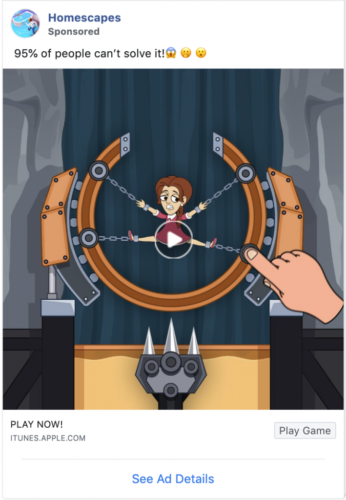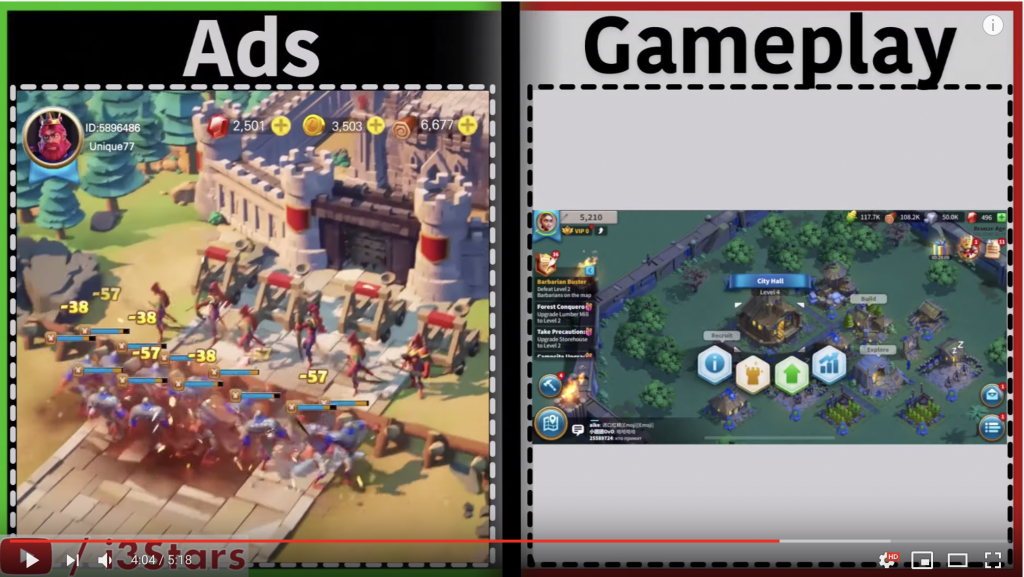What is the reason for the growing popularity of fake banners and videos and why they will not be banned, — marketing specialist Eric Seufert (Eric Benjamin Seufert) said in his column.
This publication is a translation of Eric’s column from the Mobile Dev Memo website.

Photo: Kate Trysh with Unsplash

Eric Seifert
In recent years, one of the strange trends in the marketing of mobile games has been the development of “fake advertising”. It’s about advertising, which turns the gameplay completely unrelated to the game.
The i3Stars YouTube channel even has a special Mobile Game Ads Vs. Reality category. It contains videos demonstrating the huge difference between advertising games and their real mechanics.
A video from the Mobile Game Ads Vs. Reality category from the i3Stars channel
Some of these ads blatantly distort the gameplay. For example, a third-person three-dimensional adventure video is used to promote a 4X strategy. Some of these ads are really weird, like the one where they use a torture video to promote three-in-a-row.

Unusual Homescapes Ads
Anyway, it was Facebook‘s advertising library that helped to reveal this strategy, bringing transparency to the variety of advertising creatives used by large advertisers.
Returning to the question asked in the title of the material, I will assume that companies launch fake advertising because it works and provides profit from marketing expenses. And then two other questions come to the surface: why does fake advertising work and why do advertising platforms allow it?

There is at least one genre of games here
The first question is easier to answer: none of the advertisers knows why advertising works or does not work. The beauty of the modern event-driven algorithmic paradigm of mobile advertising is that advertisers do not even need to build versions of how the audience will react to this or that advertising creative. It’s enough for them to simply provide Facebook and Google with a lot of advertising and allow these platforms to find the best combination of advertising and audience.
It is useless to try to understand intuitively how people will respond to advertising. It’s much more effective to just experiment with different concepts and options and test them on a real audience. And this was true even before Facebook and Google rolled out algorithmic audience targeting. As it turned out: sometimes people respond to really strange and extravagant concepts and images. So one of the reasons why these fake ads have become so common is the following: thanks to Facebook and Google, it has become easier to experiment and find ideas that advertisers would not have dared to test in other circumstances.
As for the question of why advertising platforms allow you to run fake ads, then everything is also simple. If such advertising is effective, it means that platforms make money on its maintenance.
US Federal Trade Commission (FTC) does not punish for this practice, since it cannot prove that it violates the provisions of existing laws on Truth in advertising.
In 2012, the FTC accused Jesta Digital, an application developer and digital agency, of fraud due to an advertising campaign. The latter misled users that their smartphones were infected with a virus. The fine, however, was primarily due to the fact that users who clicked on the ad were offered to subscribe to one of the Jesta services. The fact that the advertisement had nothing to do with the presence of a virus on users’ phones did not really bother the commission.

Developers were scolded in the end not for scaring users
The FTC also recently sued Match.com for deceiving users. The service made them believe that their profiles were being viewed and thereby stimulated them to pay for a subscription*. But, again, the accusation was more related to subsequent purchases that were made as a result of advertising, and not with the advertising itself.
* Editorial note: Match.com — dating service. Like its analogues (Badoo and Tinder), it does not allow you to see who liked the user by default. At the same time, he informs if a like comes. If a user wants to find out who liked him, he must pay or subscribe. In this case, we are talking about advertising banners that informed that someone liked the profile of a person, and led to the app store.
It is unclear whether the FTC will set a precedent in connection with misleading advertising of free games. It will be difficult to prove that any payment was the result of advertising (in the case of games, the user sees the gameplay before he gets to the store screen).
It is not so rare to see a large number of caustic comments under posts with fake advertising. Communities have appeared on Reddit and YouTube that condemn this practice, so more and more ordinary users are aware of the situation.
Given the huge amount of money in advertising mobile games, as well as the obvious difference between advertising and products, it is likely that platforms at some point will have to come to grips with this situation.
To be fair, this strategy is used not only by gaming companies. Many applications dedicated to health and sports advertise absolutely fantastic functionality that simply does not exist.
Also on the topic:
- Why did Supercell acquire advertising on the air of the Super Bowl?
- The main feature of the mobile app economy is “Winner takes all” in one chart
- Why are mobile marketing prices rising?
